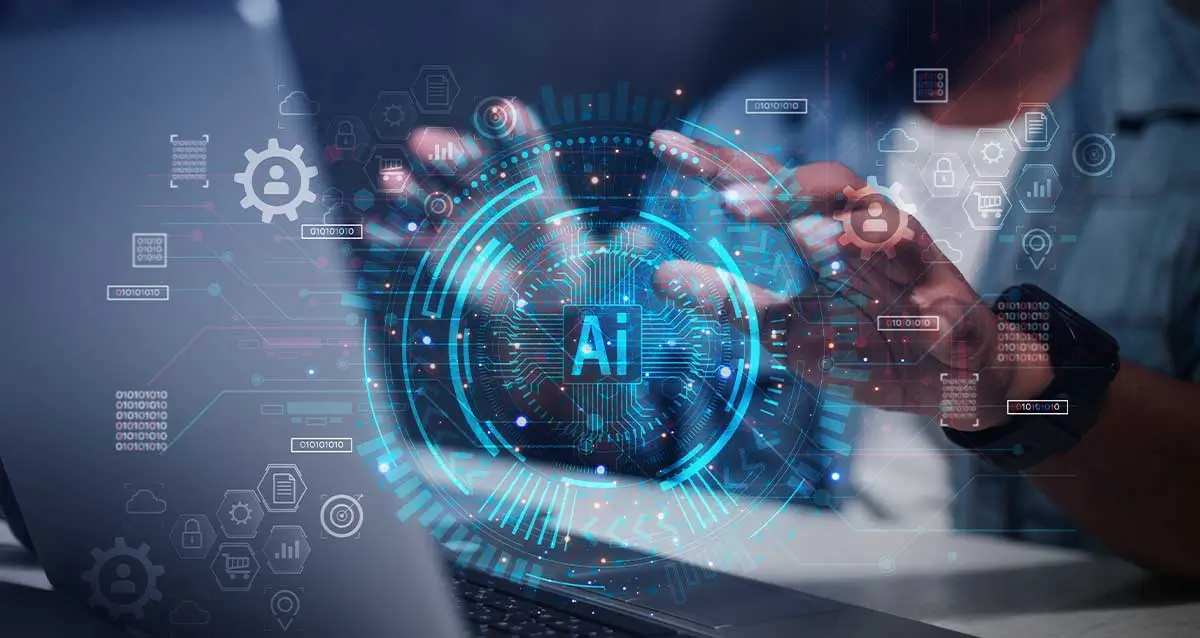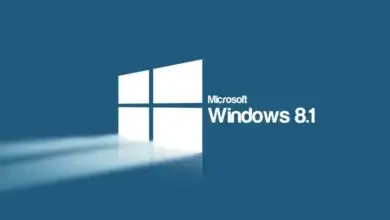
7 Software Development Trends Which Will Be Popular In Future
When viewing the world with a progressional touch towards technological influence, we can easily draw no better picture than towards software development. The industry is still taking leaps and bounds as we move ahead to 2024 and beyond to keep up with the new ways to design, develop, and deliver software.
From AI integration for ML models to green software development practices, these are not simply modifying the game but recreating it. This innovation is evident across industries, from technology startups to niche areas like estate agent websites, which now leverage advanced platforms to deliver better user experiences. What follows is the overarching and detailed analysis of 10 leading software development trends defining the industry’s future. So whether you are an expert software developer, a tech-smart follower, or a business leader aware of developments in this exciting field, you will need to know about any of these trends.
AI-Augmented Development: Deloitte insight:
This paper has realized that AI has not stopped causing waves in several disciplines, including software development. AI application in the software development life cycle is one of the revolutionary trends in the contemporary world.
According to programming coders such as GitHub Copilot and Tabnine, coding brilliance has begun to transverse into another dimension. GitHub Copilot and TabNine are some of the coding tools with AI integration, and they are now disrupting development. These tools utilize machine learning so that they can predict about large repositories in its entirety or nearly, which line or block of code a developer is currently involved in. He stated that this also fast-tracks the coding while at the same reducing mistakes and improving the quality of the code.
But it is here that one must also add that AI in software development, is not only about code completion. Bug: They should thus not use terms such as forecast and estimate to the extent that they hitherto appear. Improves code performance with no input from developers•. To generate more new code tests to widen the application of principles related to QA.
Reducing redundancy of work and thereby creating time for more cerebral work development is no exception. The adoption of AI as part of the development processes might rank right at the top of the most revolutionary initiatives we are experiencing at the moment.
He stated that this also fast-tracks the coding while at the same reducing mistakes and improving the quality of the code. However, the application of AI is not only limited to the code composing though it has carried us far away.
AI algorithms are now being used to:
- Avoid a bug from arising and becoming a real menace.
- Automatically tune applications’/performance optimization
- Derive scenarios that can create a wider range of precondition and post-condition checks for higher QA.
- Get rid of so many cycles so that the developer can focus on real issues.
- To contribute to the creation of more extensive quality tests for the system.
- Minimize repetitive tasks that can be otherwise exhausting to developers and confine such tasks to simple problems.
This principle is still in its developmental stage, hence we can postulate that in the future, some higher forms of application of this technology shall be realized.
For example, AI can start presenting more elaborate solutions, and developers would be tasked with refining those creations by, for instance, adjusting certain aspects of a fluid project as a whole to achieve optimal functionality by converging high-level project specifications. However, here, we must clarify that AI does not threaten human developers. However, it’s enhancing their capacity, enabling them to get more things done and systems to solve other demanding issues. This combination of human imagination and artificial intelligence technologies creates unattainable new opportunities in the software production process.
Low-Code and No-Code Platforms:
Enabling everyone Another area that has emerged as a successful trend that is quickly revolutionizing the entire developing scene is low-code/no-code platforms.
Such platforms are created to shift application development to the level where everyone can contribute, effectively bringing application development to the masses. Low code software like Out Systems and Mendix enables developers to build applications by actually dragging components across the screen to build applications. However, they still need some coding knowledge but include much less hand coding than a typical CMS. No-code platforms do this one step further.
The implications of this trend are far-reaching:
- Faster development cycles: It can also be observed that with this method, there will be a possibility of building and hosting applications in a shorter time when compared to other methods.
- Reduced development costs: In this way, organizations can avoid using costly resources to develop applications from scratch.
- Increased innovation: This increases the number of app ideas that people can play with, which may lead to unique solutions across almost every field.
- Alleviating developer shortage: Thankfully, due to the constant scarcity of skilled developers, technologies such as low-code and no-code can act as a solution.
But there are also new trends that could be more straightforward. With an increasing number of nontechnical users creating applications, problems such as scalability, security, and maintainability might creep in. Career developers will likely have to reinvent themselves somewhat: migrate mostly to the high end in problem-solving and architecture and assume primary responsibilities for incorporating low-code/no-code into higher-end systems.
Edge Computing: Bringing Computation Closer to Data Sources

Specifically, edge computing has begun to arise as an important trend in software development as IoT persists as a trend and 5G networks gain more ground. This principle is still in its developmental stage, hence we can postulate that in the future, some higher forms of application of this technology shall be realized. This idea relates to a particular type of computation which is edge computing rather than computation in a single central cloud.
This approach offers several advantages:
- Reduced latency: Since most processing is done on the device, edge computing drastically minimizes the time it takes for a device to provide an output or an application to offer a solution.
- Improved reliability: End-user devices can remain functional when disconnected from the encompassing central network improving system robustness.
Quantum Computing:
To Get Ready for a Computational Revolution Unfortunately, although at its primitive stage currently, quantum computing is a trend that has the potential to definitely disrupt software development.
Quantum computers are devices that follow the quantum mechanics theory, and which can solve specific problems faster than other supercomputers. Quantum hardware has gradually evolved over the years and as a new set of software engineers emerged asking themselves how they could deploy this immense computational power.
Some key areas where quantum computing could have a significant impact include:
- Cryptography: Most of the contemporary encryption techniques may indeed be considerably sensitive to attack by quantum computers; thus, the development of quantum-immune cryptography.
- Optimization problems: It is clear that solutions for difficult optimization problems in, for example, the fields of supply chain management, quantitative finance, or pharmaceuticals could be found far more rapidly.
- Machine learning: Some quantum algorithms may bring the speed up, and combined with various fields of machine learning, they might indeed provide breakthroughs in artificial intelligence.
- Simulation: Quantum computers could spur simulations of molecular and chemical changes hence faster science.
- Undertaking studies that entail knowing program languages & framework; Qiskit, Cirq, or Q#
- Quantum algorithms concepts and their uses
- Studying the classical and quantum combinations that are possible to build.
- With attention to what it may be to have quantum computers in the present system, particularly for security concerns. Revolutionize application development.
- Optimization problems: Difficult nonlinear optimizations in other fields such as logistics, finance, and pharmaceuticals could be solved much more easily.
- Machine learning: New quantum algorithms could develop solutions substantially enhancing particular challenges in AI that standard methods require enormous time, for solid advancements in analyzing the learning process.
- Simulation: Currently, quantum computers could be used for more realistic modeling of molecular and chemical interactions which would bring faster scientific discovery.
For software developers, preparing for the quantum future involves:
- Understanding various kinds of quantum development languages and platforms such as Qiskit, Cirq, or Q#.
- The identity of the quantum algorithms that exist together with their applications
- Others may regard the analysis of quantum-classical, or even hybrid systems which may encompass features of both quantum and classical computing.
Green Software Engineering: Sustainability of a code for sustainability in the future

More recently environmental concerns such as climate change and other issues have continued to grow over the years, and so is the focus within the software development field. Green software engineering is a relatively newly emerging research domain that is concerned with the construction of energy-efficient software.
This trend encompasses several key areas:
- Energy-efficient algorithms: Some algorithms are derived from putting into order action and energy in an effort to perform activities utilizing less energy.
- Cloud optimization: Avoiding the use of cloud resources in a different way than aiming at accepting all of them by designing its applications not to require computing and storage services which are actually unnecessary.
- Carbon-aware computing: Creating structures where the load applied to them can be changed depending of the contribution toward the utilization of low-carbon energy forms.
- Sustainable software architectures: The concept is to propose schemes that would not require a lot of power at the same time, and also to take full advantage of equipment usage in order to prolong its lifespan.
- E-waste reduction: Software designs and program applications that may run on relatively less powerful computers and notebooks and do not compel end-users to continually upgrade their computers and notebooks.
Other aspects of sustainability in software products relate to the green software engineering life cycle activities such as green software development, green software testing, green software installation, and green software utilization.
This approach seeks to ensure that it provides the least CO2 contact that can be made on the total carbon endpoint of IT systems.
- Energy-efficient algorithms: Figuring out how to do things that require less energy than currently known methods.
- Cloud optimization: Developing applications that employ the available cloud which compels a lesser utilization of available computational and storage resources. For developers, adopting green software engineering practices might involve:
- Employing metrics techniques in identifying and balancing the energy usage of their code
- Optimizing methods for storage and processing of data to minimize the use of resources
- Developing interfaces that capture and promote energy efficiency among users
- The environmental costs related to the selection of the hosting providers or the cloud services. From the various conclusions in this paper, this research believes that green software engineering will eventually become standard in industries as awareness of the environment increases.
There has been a call made in the future, for organizations to release the carbon footprint of the product, and hence sustainable coding needs to be done by the developers.
Web Assembly: That’s why it’s time to bring Native Performance to the Web
Web Assembly (WASM) is a new technology that has attracted much attention after it was released to web developers. It allows for code in languages like C/C++/Rust and Web Assembly and lets developers run code in browsers at near-native speeds further opening new avenues for future web applications.
The key advantages of Web Assembly include:
- Performance: Wasm code, in general, proves to provide better Performance/Size ratios than its peers written in JavaScript for specific volumes of computational problems.
- Language flexibility: Multi-sequenced languages are those that developers can use when designing web applications.
- Portability: Wasm modules are associated with standard Web Assembly and, thus, can operate not only within the browser but also beyond. For software developers, Web Assembly presents exciting opportunities:
- Converting old, non-WWW native stand-alone applications, with only a partial redevelopment
- Making web technologies engage high-interaction, high-overhead applications like games, video processing, and three-dimensional images.
- Incorporating computationally heavy functionality in Web applications such as machine learning algorithms and simulations.
For the time being, Web Assembly remains a work in progress and we recall that it is used in other contexts that go beyond a simple browser environment. It is only projects like WASI that are trying to give Web Assembly a runtime outside of serverless platforms, IoTs, etc.
Web Assembly usage is more threatening in the sense that it can easily blur the division between web and native apps in terms of remotely considerate usage and general application design.
Microservices and Serverless Architecture:
- Microservices and serverless continue to experience growth and represent a fundamental general trend of the ongoing progression in the design of applications. Microservices structure is an architectural technique that is used in organizing an application in a small.
A system of loosely coupled services where these services communicate with each other through APIs.
This approach offers several benefits:
- Scalability: Each service can thus be so developed that it can easily be scaled up or scaled down in line with the amount of traffic it handles.
- Flexibility: To address the activities, different services can use different technologies so that the teams can apply the optimal ones for the particular purpose.
- Resilience: In a microservice setup, for example, if one particular function fails, it has a consequential effect on other functions but not on other microservices.
- Easier maintenance and updates: Since the output of a system is services, services can be modified, or replaced by another without the total redesign of the system.
Serverless computing on the other hand takes it a step further allowing developers to build and run applications without having to think of servers. In the serverless model, cloud providers are fully responsible for the resources and have corresponding changes in the scale of resources.
The advantages of serverless include:
- Lowered operational costs: For the amount of time you use for computing, you pay for charges on an as-used basis exclusively.
- Automatic scaling: The platform manages scalability, which means applications can work with large loads instantly.
Focus on code: It can work on the coding of an application and the several requirements of the infrastructure are met consistently.
- Concurrent computing and distributed bargain for writing.
- An unstable service interaction and many unmonitored and unobservable systems.
- Ensuring data integrity of the applications since they are microservices
- Having low dependencies since each function is small and standalone as defined by the serverless mantra of the next choice.
- Since the architecture of microservices is primarily focused on serverless architectures, what other key characteristics of the microservice infrastructure does having each function be independent provide?
Omentum implies a new way of thinking about applications: how they look, how they are built, and how they are delivered.
The advantages of serverless include:
- Lower operational expenses: With Wikipedia hosting, you are only charged for compute time.
- Automatic scaling: On the scaling issue, the platform takes care of it, meaning that the applications can work well under any load.
- Focus on code: It saves time for the developers as they do not need to worry on issues to do with infrastructure.
For developers, adapting to these architectures requires a shift in thinking:
- The general structure and philosophy of designing for distributed systems and solving cases of inter-service communication.
- Powerful strategies for building distributed systems monitoring and observability solutions.
- Microservices data consistency cases and how to handle them.
- Optimizing code for short-lived, stateless functions in serverless environments.
What we get, though, as we evolve these architectures is the development of patterns and, of course, ‘best practices.’ For example, the “Service Mesh” pattern is an emerging solution for managing microservice communication, and the “Serverless Containers” pattern attempts to blend containerization and serverless computing.
These trends involve a shift in how we build applications and think about how applications should be managed, teams structured, and workflow within organizations.
Final Words
As described in this article, the field of software development is ever-evolving and constantly presenting new and interesting developments. These are trends such as AI-augmented coding, Green programming, automated testing, and others making up the future of software development and the world of technology.
It is important for developers to knowledge themselves with these trends. It’s not simply new technologies that are being learned, but about understanding the shift in problem-solving and system design paradigms and even what software is in the first place. These trends also align with potential threats and opportunities for various firms and organizations. Adopting these innovations in fields respectively may result to effective implementation, good customer relations, service delivery, and a complete revolution in the strategies of business.



